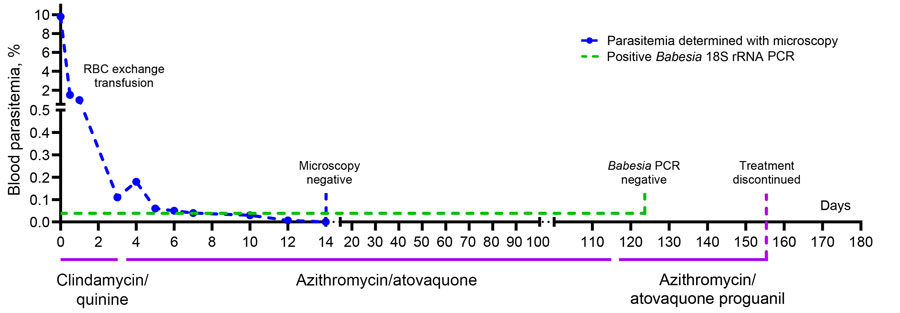Volume 30, Number 9—September 2024
Dispatch
Autochthonous Human Babesiosis Caused by Babesia venatorum, the Netherlands
Figure 2

Figure 2. Clinical evolution of illness and treatment in case-patient with autochthonous human babesiosis caused by Babesia venatorum, the Netherlands. RBC, red blood cell.
1These authors contributed equally to this article.
Page created: August 01, 2024
Page updated: August 21, 2024
Page reviewed: August 21, 2024
The conclusions, findings, and opinions expressed by authors contributing to this journal do not necessarily reflect the official position of the U.S. Department of Health and Human Services, the Public Health Service, the Centers for Disease Control and Prevention, or the authors' affiliated institutions. Use of trade names is for identification only and does not imply endorsement by any of the groups named above.